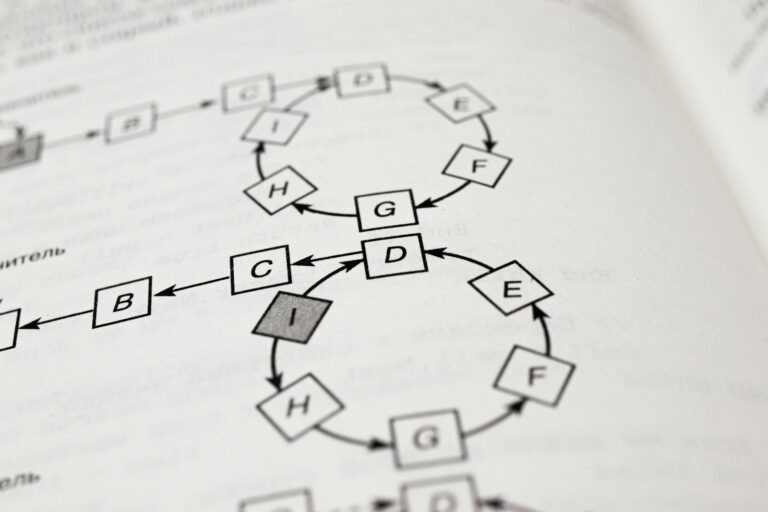A Circular Linked List (CLL) is a variation of the traditional linked list in which the last node does not point to NULL but rather links back to the first node, thus forming a circle. This circular nature allows for efficient looping through the list from any node and is especially useful in applications that require a cyclic iteration such as task scheduling, round-robin CPU scheduling, and multiplayer game systems. This chapter provides comprehensive insights into the structure, operations, types, and applications of Circular Linked Lists in accordance with the latest B.Tech Data Structures Notes 2025 and Unit 2 Notes Data Structures syllabus.
Definition and Concept of Circular Linked List
A Circular Linked List is a linear data structure wherein the elements are stored in non-contiguous memory locations and the last node is connected back to the head node. Unlike singly or doubly linked lists, the circular linked list has no concept of NULL termination. Each node consists of two parts:
- Data field: Contains the value to be stored.
- Pointer field: Stores the address of the next node.
In a singly circular linked list, each node points to the next node, and the last node points back to the head node. In a doubly circular linked list, each node has two links—one to the next and another to the previous node, forming a closed loop in both directions.
Types of Circular Linked List
- Singly Circular Linked List: Each node contains a data part and a link to the next node. The last node points to the first node.
- Doubly Circular Linked List: Each node contains a data part, a link to the next node, and a link to the previous node. The last node’s next pointer connects to the head, and the head’s previous pointer connects to the tail.
Structure of a Node (in C-like syntax)
struct Node {
int data;
struct Node* next;
};For doubly circular:
struct DNode {
int data;
struct DNode* prev;
struct DNode* next;
};Diagram of a Singly Circular Linked List
+------+ +------+ +------+ +------+
| 10 | --> | 20 | --> | 30 | --> | 40 |
+------+ +------+ +------+ +------+
^ |
|______________________________________|Advantages of Circular Linked Lists
- No NULL values, easier to implement circular queues
- Can be traversed from any node
- More efficient for cyclic processes
- Saves space in applications that repeatedly traverse the list
Disadvantages of Circular Linked Lists
- More complex to implement than singly linked lists
- Requires extra care during traversal to avoid infinite loops
- Slightly slower than arrays in random access scenarios
Operations on Circular Linked List
1. Insertion
- At the beginning
- At the end
- At a specific position
Insertion at the Beginning (Singly Circular)
- Create a new node.
- If list is empty, point the new node to itself.
- Else, traverse to the last node, point it to the new node.
- Point new node to the head.
- Update head to the new node.
Insertion at the End
- Create a new node.
- If list is empty, point it to itself.
- Else, traverse to the last node, make it point to the new node.
- New node should point to head.
2. Deletion
- From beginning
- From end
- From a given position
Deletion from Beginning
- If list is empty, return.
- If only one node, free it and set head to NULL.
- Else, go to last node, update its pointer to head->next.
- Free head and update head.
Deletion from End
- Traverse to second-last node.
- Update its pointer to head.
- Free the last node.
3. Traversal
Use a temporary pointer. Start at head and continue until you reach head again.
Implementation Example (Singly Circular Linked List)
void traverse(struct Node* head) {
struct Node* temp = head;
if (head != NULL) {
do {
printf("%d ", temp->data);
temp = temp->next;
} while (temp != head);
}
}Real-Life Applications
- CPU Scheduling (Round Robin Algorithm)
- Multiplayer board games
- Traffic light controllers
- Circular buffers in embedded systems
Comparison with Other Linked Lists
| Feature | Singly Linked List | Doubly Linked List | Circular Linked List |
|---|---|---|---|
| Ends with NULL | Yes | Yes | No |
| Bidirectional traversal | No | Yes | Yes (if doubly circular) |
| Circular navigation | No | No | Yes |
🔹 Short Answer Questions (2-3 Marks)
- Define Circular Linked List. A Circular Linked List is a type of linked list in which the last node points back to the first node, forming a circular structure.
- What is the main advantage of a circular linked list? It allows continuous traversal without worrying about NULL pointers.
- List two applications of Circular Linked Lists. Round Robin CPU scheduling, circular buffers in OS.
- Differentiate between singly and circular linked list. A singly linked list ends in NULL, whereas a circular linked list’s last node points to the head.
- Can we implement queues using circular linked lists? Yes, circular linked lists are ideal for implementing queues due to their cyclic nature.
- What makes doubly circular lists more efficient than singly circular? Bidirectional traversal is possible, allowing flexible access.
🔸 Long Answer Questions (5-10 Marks)
- Explain the structure and working of Circular Linked List with suitable examples and diagrams. A circular linked list consists of nodes connected in a circle. Each node has data and a link to the next (and previous in doubly circular). It allows traversal from any node to any other node in constant time. [📌 Insert Diagram: Doubly Circular Linked List Traversal]
- Write and explain the algorithm for insertion at the beginning and at the end of a singly circular linked list. The steps involve creating a new node, linking it appropriately, and updating head or tail pointers while maintaining the circular nature.
- Compare Circular Linked List with Doubly Linked List. Which one is preferable and why? Circular lists provide cyclic traversal, while doubly lists support backward traversal. Depending on use-case, circular lists are ideal for round-robin and real-time systems.
- Write a C function to delete a node from the end in a singly circular linked list. Explain with example. The function traverses to the second-last node, updates its link to head, and frees the last node.
- Discuss the traversal logic in circular linked list. How does it differ from linear lists? Circular lists require a
do-whileloop that ends when the start node is reached again, unlike linear lists which end at NULL.
📝 Chapter Summary
Circular Linked List connects last node back to the head instead of NULLEach node has a data field and a pointer fieldCircular Linked Lists can be singly or doubly linkedEfficient for applications needing cyclic accessTraversal uses do-while loop to detect completionInsertion and deletion require updating tail pointers carefullyUsed in round-robin scheduling, circular buffers, gamesMore complex than singly lists but enable continuous looping
📘 Model Paper / Sample Internal Exam Questions
- What is a circular linked list? Explain its advantages with examples.
- Write a program in C to traverse a singly circular linked list.
- Describe the algorithm for inserting a node at the end of a circular linked list.
- Compare and contrast circular and doubly linked lists.
- Explain any three real-world applications of circular linked list.



